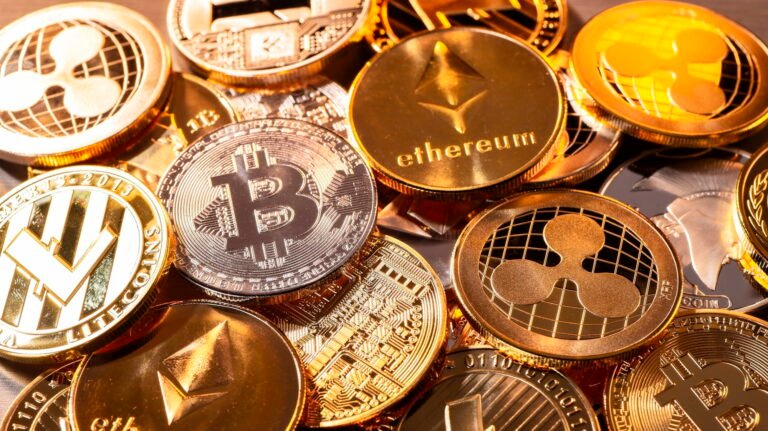XRP cryptocurrency after Bitcoin: new digital assets are developing, and market dynamics are changing fast. Among the many cryptocurrencies fighting for popularity, XRP has emerged as one of the most fascinating candidates to take the stage, maybe immediately following Bitcoin. Since its launch by the enigmatic Satoshi Nakamoto in 2009, Bitcoin has remained the pioneer and the biggest coin by market capitalisation. Still unresolved is whether XRP will eventually take the front stage among cryptocurrencies following Bitcoin. Examining XRP’s special technology, market positioning, alliances, regulatory hurdles, and the dynamics of the larger crypto ecosystem can help one respond to this.
XRP price and market performance
With a market value of about $151.6 billion, XRP is currently trading at roughly $2.36 USD. This reflects XRP’s great prominence in the digital asset market, placing it firmly among the top five cryptocurrencies by market capitalisation.
Lately, the market for cryptocurrencies has shown rather significant fluctuations. For example, Bitcoin dropped 2.3% in the past 24 hours to $102,408. Comparably, XRP and other cryptocurrencies, including Ether and Solana, had more pronounced declines between 4% and 7%. This recession coincides with a pivotal week for cryptocurrency since the U.S. Senate will likely approve important stablecoins legislation. By requiring issuers to keep reserves in liquid and safe assets and follow anti-money-laundering and anti-terrorism financing rules, the act seeks to control stablecoins such as Tether.
XRP’s Place in the Market for Cryptocurrencies
Usually trailing only behind Ethereum and Bitcoin, XRP has regularly ranked among the top cryptocurrencies by market capitalisation. This product’s strong market presence results from its liquidity, general acceptance by financial institutions, and active developer community. XRP’s place in the conventional finance ecosystem is further reinforced by Ripple’s alliances with big banks and payment providers globally, such as Santander, American Express, and Standard Chartered.
One unique element distinguishing XRP from other altcoins is its interaction with legacy money. XRP seeks to provide the backbone for actual financial transactions, pitching itself as a utility token with natural use cases. At the same time, Bitcoin is generally seen as “digital gold” or a store of value.
XRP Faces Key SEC Lawsuit
XRP’s continuous legal fight with the U.S. Securities and Exchange Commission (SEC) is one of the key elements determining its future supremacy. Ripple contests the SEC’s allegation that its first XRP sale was an unregistered securities offering. On numerous U.S.-based exchanges, this legal ambiguity has impacted XRP’s market pricing and availability.

Notwithstanding these challenges, Ripple’s dedication to regulatory compliance and openness has won praise from several countries outside the United States, including Europe, Asia, and the Middle East. Especially in the vital American market, the result of this litigation will significantly affect XRP’s capacity to scale more and attain widespread acceptance.
XRP Against Other Major Cryptocurrencies
Comparing XRP with Ethereum, Binance Coin (BNB), and newly developed Layer 1 blockchains like Solana and Cardano can help determine whether XRP can take the front stage among cryptocurrencies following Bitcoin. Ethereum’s strong point is its innovative contract capability and vibrant decentralised finance (DeFi) ecosystem, which allows many distributed apps (dApps).
XRP, on the other hand, concentrates more narrowly on the financial industry, especially cross-border payments and remittances. XRP cryptocurrency, after the Bitcoin protocol, is ideal for speed and cost-efficiency, which appeals to institutional customers. Meanwhile, Ethereum is developing Ethereum 2.0 and Layer 2 solutions to handle scalability and fees.
Furthermore, Binance Coin’s supremacy results from its position inside the Binance Smart Chain ecosystem; more recent blockchains like Solana have excellent throughput but deal with decentralisation and security issues. XRP has a special competitive edge because of its mix of speed, low fees, and solid banking relationships.
XRP’s Growth Through RippleNet and Global Alliances
XRP’s expansion plan has always revolved mostly around strategic collaborations. Using its cross-border settlement solutions, RippleNet, the worldwide payment network driven by Ripple technology, claims over 300 financial institutions. Maintaining real-world use cases made possible by these alliances helps XRP stay relevant, a significant factor promoting ongoing adoption.
Furthermore, Ripple is significantly focused on actively pushing XRP adoption in developing nations, including Latin America, Southeast Asia, and Africa, where remittance channels reflect significant economic activity. XRP also has potential synergy from partnerships with central banks investigating Central Bank Digital Currencies (CBDCs).
Final Thoughts
Although Bitcoin is still the unquestionable king of cryptocurrencies, XRP makes a solid argument that it is the most often used cryptocurrency after Bitcoin because of its creative technology, broad real-world applications, and close financial alliances. Regulatory clarity, market acceptance, and how effectively XRP competes against developing blockchain technologies will determine its future dominance. Closely tracking XRP’s developments alongside more general market trends will be crucial for investors and crypto aficionados to grasp its ability to transform the direction of digital banking.


